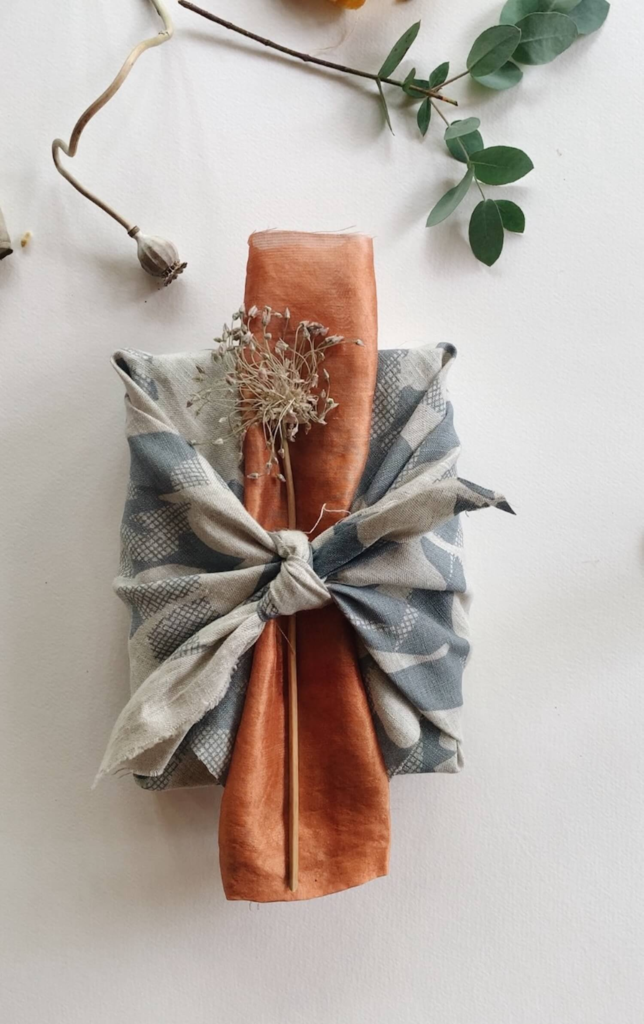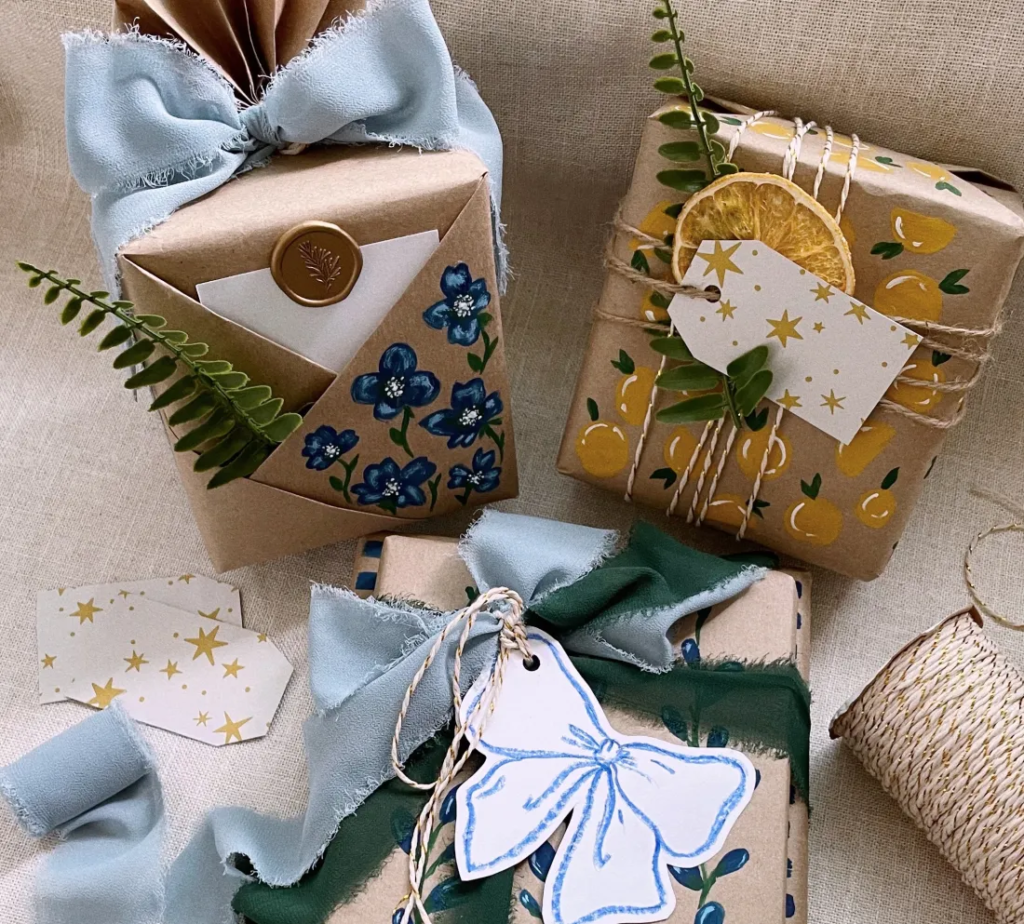Furoshiki (Fabric Wrapping)
- What it is: A traditional Japanese wrapping technique using fabric.
- Eco-advantage: Reusable and reduces paper waste.
- Tip: You can use scarves, bandanas, or leftover fabric from old clothes. It adds a personal touch and can double as a part of the gift.
2. Recycled Paper
- What it is: Reusing old newspapers, maps, or magazine pages to wrap gifts.
- Eco-advantage: Repurposes materials that would otherwise be thrown away.
- Tip: Add natural elements like twine, dried flowers, or sprigs of pine for decoration.
3. Reusable Gift Bags
- What it is: Use cloth or canvas gift bags instead of traditional wrapping paper.
- Eco-advantage: These bags can be reused over and over, reducing the need for disposable wrapping.
- Tip: Choose seasonal designs that can be used year-round or opt for neutral, timeless styles.
4. Upcycled Materials
- What it is: Wrapping gifts with materials like old book pages, outdated calendars, or even wallpaper scraps.
- Eco-advantage: Prevents waste and gives new life to items you might have thrown out.
- Tip: For a personal touch, write a message or draw on the upcycled material.
5. Kraft Paper with Natural Accents
- What it is: Simple kraft paper that is biodegradable and recyclable.
- Eco-advantage: Minimalistic and eco-friendly.
- Tip: Decorate with natural elements like cinnamon sticks, pinecones, dried fruit, or herbs to add a festive feel without plastic ribbons or bows.
6. Mason Jars or Reusable Containers
- What it is: Place small gifts inside mason jars, tins, or other reusable containers.
- Eco-advantage: The containers can be reused after the gift is opened.
- Tip: Paint or decorate the jars to add a personalized touch.
7. Compostable Wrapping Paper
- What it is: Wrapping paper made from compostable materials like bamboo or hemp.
- Eco-advantage: It can break down naturally and doesn’t contribute to landfill waste.
- Tip: Look for non-toxic inks and dyes when choosing compostable wrapping paper.
8. Glassine Bags
- What it is: These semi-transparent, wax-paper-like bags are made from pure wood pulp and are biodegradable.
- Eco-advantage: Can be composted or recycled.
- Tip: Use them for smaller gifts and tie with twine or reusable ribbon.
9. Old Clothing or Textiles
- What it is: Repurposing old clothes, towels, or linens to wrap gifts.
- Eco-advantage: Reduces fabric waste and adds a personal, handmade element.
- Tip: Consider using textiles that have sentimental value to the recipient.
10. Seed Paper Wrapping
- What it is: Wrapping paper embedded with wildflower seeds.
- Eco-advantage: The recipient can plant the paper and grow flowers, reducing waste.
- Tip: Include planting instructions to guide the recipient.
11. Jute or Hemp Twine
- What it is: Use natural fibers like jute or hemp twine to tie gifts.
- Eco-advantage: Biodegradable and much more eco-friendly than plastic ribbons.
- Tip: Pair with recycled paper or fabric wrapping for a cohesive look.
I hope you like this post, Do pin it and share it with others.
Sharing is Caring!
You May Also Like:










